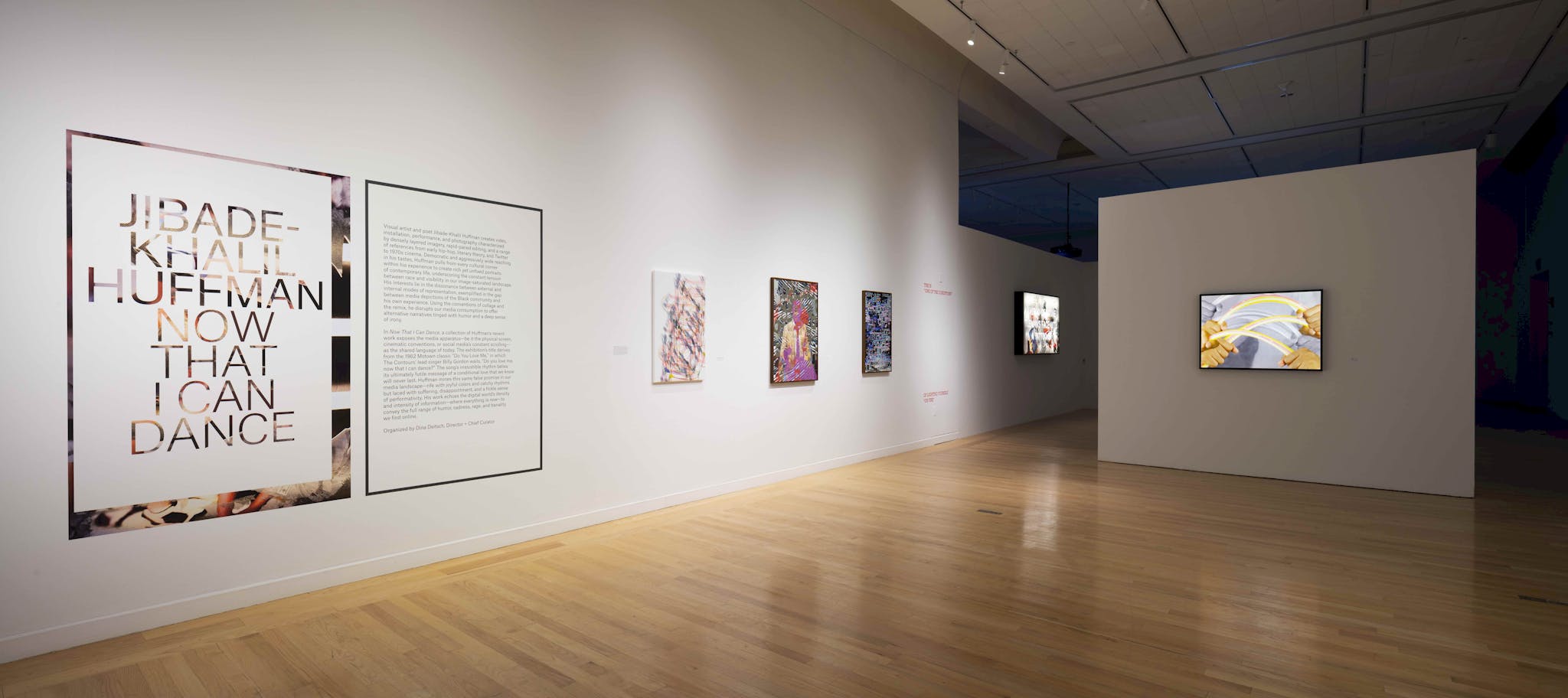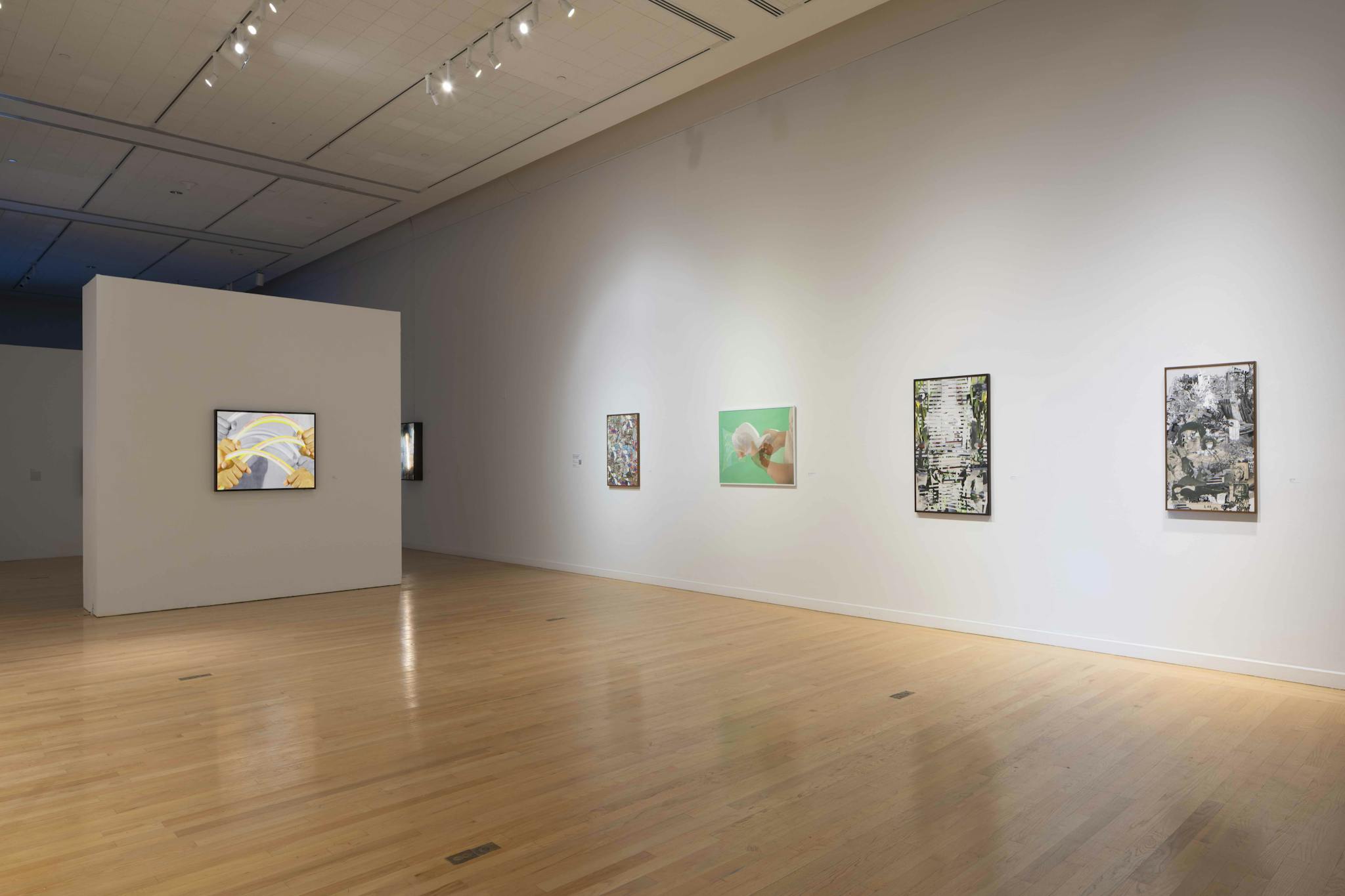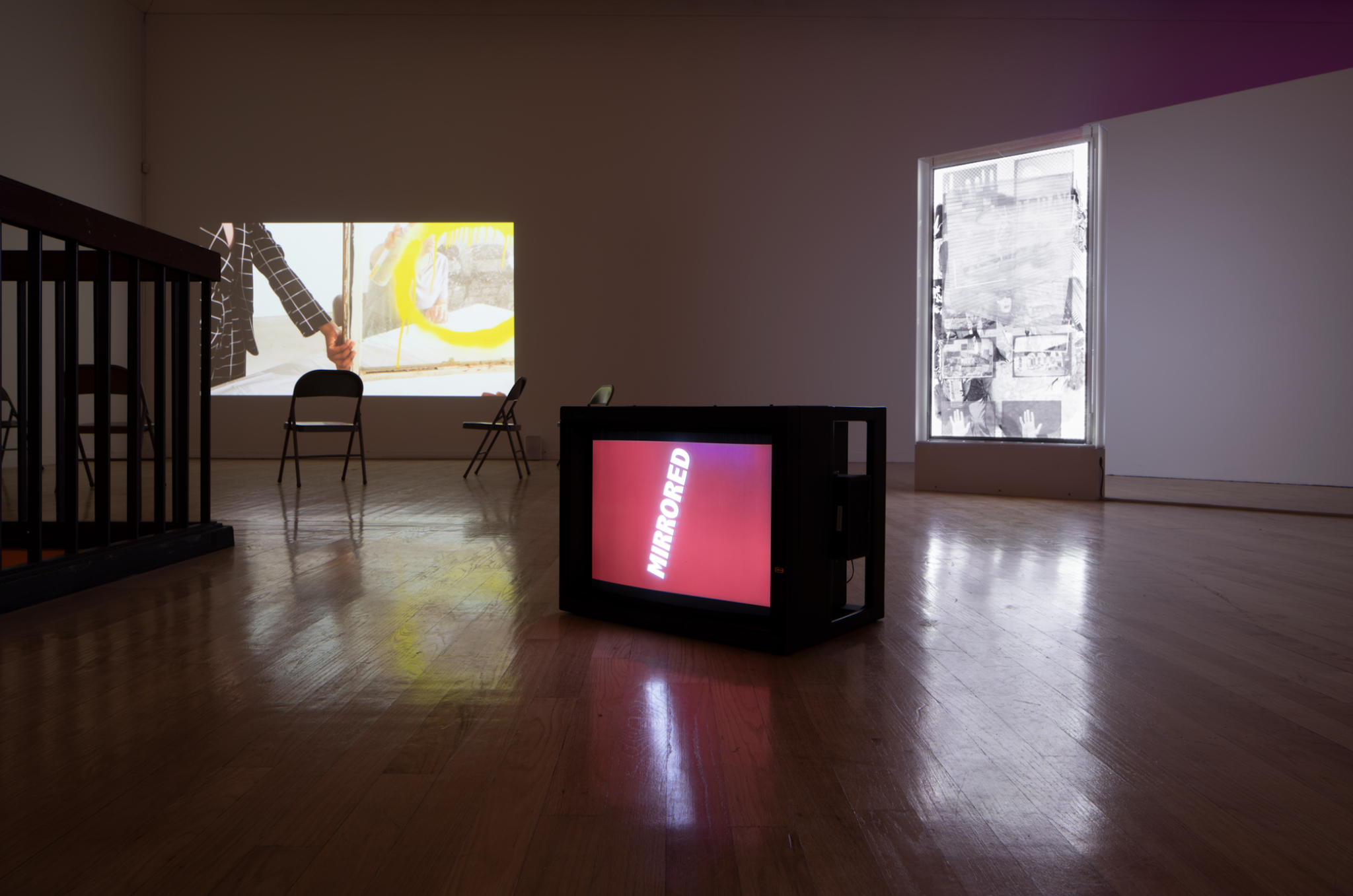Presented by Tufts University Art Galleries, Jibade-Khalil Huffman’s Now That I Can Dance is the first solo exhibition of Huffman’s work in New England. Now That I Can Dance features over twenty collaged prints, videos, and lightbox “paintings” that date from 2014 to the spring and summer of 2020, when he developed The Circle, a video project now making its debut. The exhibition is on view to Tufts students and faculty at the Aidekman Arts Center on the Medford campus through March, but due to COVID closures, I visited the virtual exhibition constructed on Matterport, a virtual tour software platform. The materiality and meaning of the works in Now That I Can Dance translate beautifully into the digital space.
Rooted in his lifelong poetry practice, Huffman’s oeuvre interrogates the nebulous space between what we see on hyper-mediated platforms and how engaging with those platforms begins to shape us. I interpret Huffman’s work through a posthumanist lens, a concept of subjectivity defined by theorist N. Katherine Hayles as “a material-informational entity whose boundaries undergo continuous construction and reconstruction.” Collage is a recurring methodology of Huffman’s, creating the perfect grounds for this collection and reconfiguration of the contemporary subject’s amorphous data.
Huffman layers pop culture clippings with videos that capture life’s banalities, often with a hint of absurdity: a group of protestors pacing in circles with Party City-like yard signs, a foley artist recording sound effects who hauntingly holds a hammer over the top of his hand, preparing to strike. The viewer is brought directly into the chaos of Huffman’s inner world. Here, we are invited to join him in questioning and separating the role that mass media has played in shaping each one of us and, more deeply, to understand how often monolithic depictions of Black culture across film, television, and music influence creations and conceptions of Black identity. Huffman describes how his pieces can evoke “a feeling that makes you… think about race and how Black people see themselves,” in juxtaposition to how “media sees Black people.” Like poetry, which Huffman describes as “in between fiction and nonfiction,” Huffman’s multi-media assemblages situate in life’s in-between spaces.
The exhibition title echoes the Contours’ 1962 song “Do You Love Me”; its main lyric pleads, “Do you love me now that I can dance?” While the curatorial text suggests that this title alludes to the “false promise” of mainstream media, its incessant performativity and ultimate desensitization towards marginalized communities led me to find additional meaning. Notice how Huffman drops the self-doubting “Do you love me?” and instead foregrounds “Now that I can dance.” Despite a terrain rooted in the inescapable politico-media complex, Huffman’s work reverberates beyond its materiality, revealing fragments of the artist’s psyche and a greater cultural consciousness.
The gallery opens with a selection of Huffman’s inkjet prints: collages that layer faces, shapes, numbers, found graphics, and new photography. Untitled (Monitor) (2015), almost hidden upon the entrance’s brick wall, depicts an energetic cluster: the pinks of perfectly tucked beds, the blues of backward-facing chairs, and other assorted furniture pieces coalesce onto a plane of black space and white contours. Collage prints effectively introduce the artist’s thesis of aestheticizing identity construction amidst mass-media culture. A collage “unit” is an amalgam of heterogeneous components and their repetition, much like a deconstructed subject. Huffman finds the poetics in iteration, rendering it cosmic.
Moving through the gallery, viewers are introduced to Huffman’s video work, which channels Dadaist collage tradition for a post-network era. An excerpt from Black Twitter in the Hour of Chaos (2018) is itself a cinematic collage, weaving audio-visual clips into a cacophonous symphony of Black culture where a personal Black experience meets the gaze of white media. Here again, Huffman remixes the dominant narrative of pop culture as a means for self-determination. Good Jazz (2017), a stream-of-conscious visual poem looping on a television monitor discreetly placed in the back room, highlights Huffman’s strikingly ekphrastic poetry—a feat of interdisciplinarity that can be recognized throughout his work.
Yet, in Huffman’s matrix of mass media, viewers still find themselves on the hamster wheel of consumerist spectatorship. Exhibitions must give viewers space to traverse beyond our everyday feedback loops. While a total disruption of our overstimulated minds may be an impossible dream, transcendence is still possible, especially inside this futurist playground of glitch and possibility. I’m eager to see how Huffman’s work continues to open these fissures, allowing viewers to envision the world through a more inclusive, kaleidoscopic lens.
Jibade-Khalil Huffman: Now That I Can Dance is on view to the Tufts community at Aidekman Arts Center, 40 Talbots Ave. Medford, MA 02155 through March 26, 2021. It is available for online viewing via the TUAG website.



